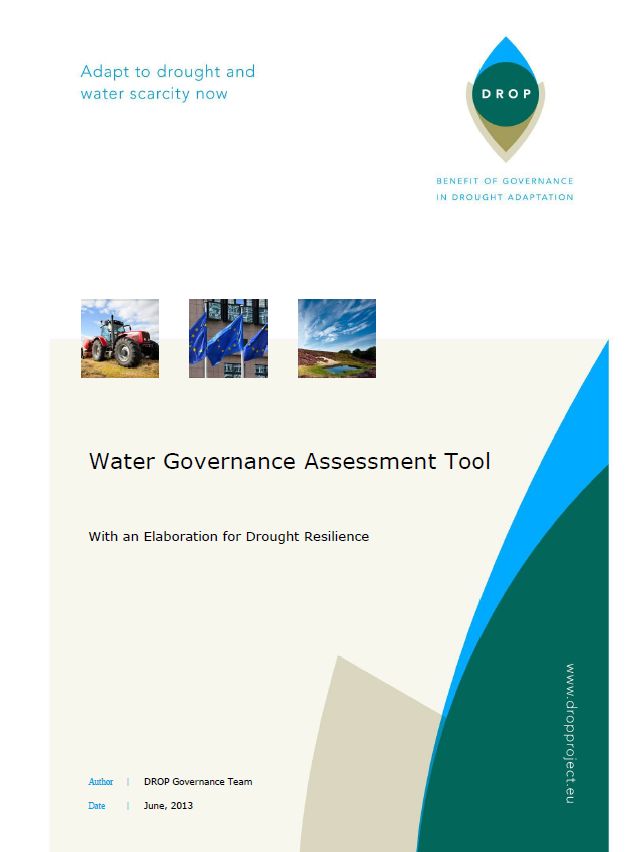Water Governance Assessment Tool
With an Elaboration for Drought Resilience
- Publication
- Citation
Bressers, Hans; Cheryl de Boer; Maia Lordkipanidze et al. 2013: Water Governance Assessment Tool - With an Elaboration for Drought Resilience.
Drought has many different causes, features and impacts. However, it can be most efficiently tackled by societies through the application of "good governance" principles and strategies. Together with other research institutions working in the DROP project, Ecologic Institute developed a Governance Assessment Tool specifically adapted to drought purposes. This tool is available for download.
Background
Whereas drought is as yet a rare phenomenon in northern Europe, climate change projections suggest increasing impacts with important consequences for agriculture, drinking water provision, and the environment. In addition to practical measures, addressing governance and implementation is considered key to adapting successfully and minimizing future negative consequences.
The Interreg project "Benefit of governance in drought adaptation" (DROP) takes a holistic approach to combating droughts, on the one hand implementing practical measures that improve drought resilience in six regions, and on the other hand working on enhancing drought governance regimes in these regions.
Water Governance Assessment Tool
The tool will be applied to assess the context of regional drought settings and pilot measures. It will be used to diagnose the regional setting and to formulate regional roadmaps for optimizing regional settings.
It uses five interrelated dimensions of governance to systematically describe the contents of governance regimes concerning drought:
- Levels and scales (not necessarily administrative levels)
- Actors and networks
- Perceptions of the problem and goal ambitions
- Strategies and instruments
- Resources and organization (tasks and responsibilities) of implementation
Additionally, also four quality criteria of the water regimes are to be considered:
- Extent: are all relevant aspects taken into account?
- Coherence: are all aspects reinforcing rather than contradicting each other?
- Flexibility: are multiple roads to the goals, depending on opportunities and threats as they arise, allowed and supported?
- Intensity: the degree to which the regime elements urge changes in the status quo or in current developments
For each of the five dimensions of governance, these qualitative criteria are specified.
Download
The Governance Assessment Tool [pdf, 1 MB, English] is available for download.




